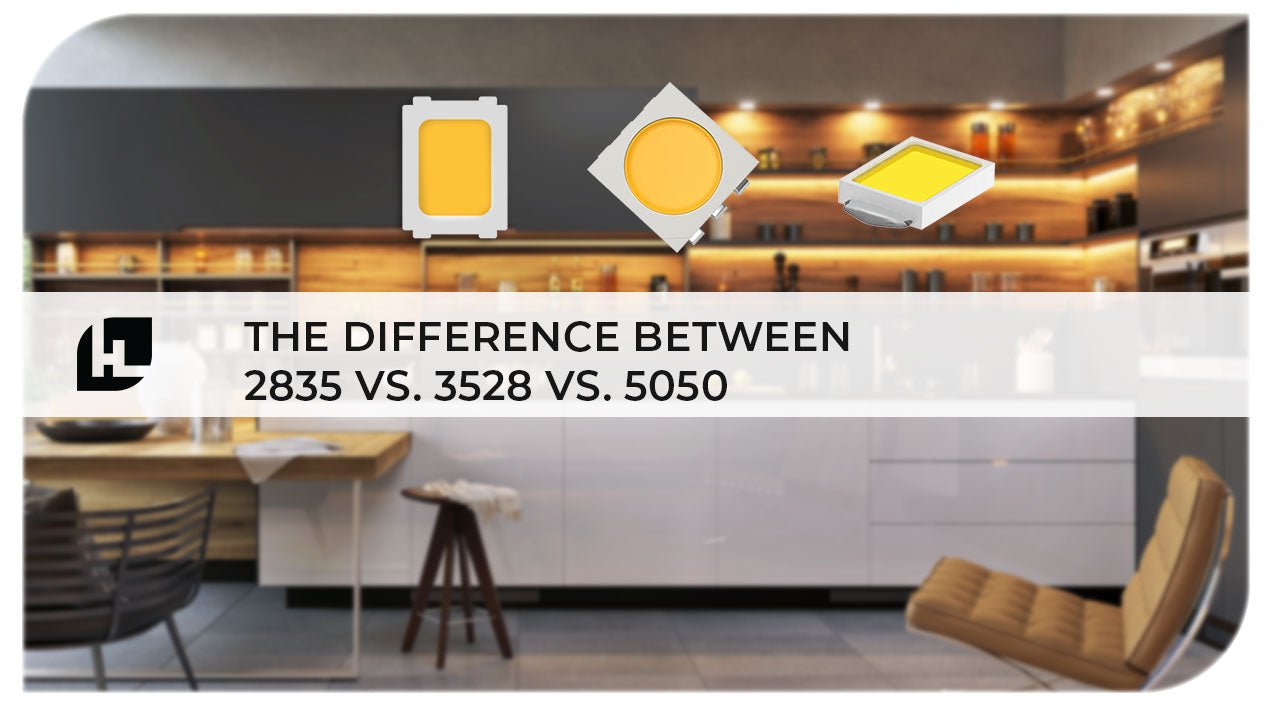Introduction
LED strip lights are becoming more and more popular, with many people buying them to replace their old incandescent bulbs. They're also a great choice for areas like stairwells or driveways, where you don't want to have to worry about changing light bulbs every few years.
If you’ve started shopping for LED strip lighting for your next project, you would have encountered these familiar numbers that stand for specific types of LED lights.
Before you decide which one to buy, it's important to know the difference between 2835 vs 3528 vs 5050 so that you can get an idea of which product would be best for your needs.
In this article, we'll discuss these three different types of LED strip lights and how they measure up against each other in terms of size and brightness (both indoors and outdoors).
2835
The 2835 LED is the most common size, and it’s used in a wide variety of applications. It has a maximum operating temperature of 70°C, which makes it suitable for outdoor use.
While its minimum operating temperature is -25°C and it emits 35 lumens per watt at this point in its lifespan, you can expect that number to decrease as you age your LEDs—this means that over time they will emit less light than they did when new.
The 2835 LED also offers some features that make them ideal for outdoor use: they have an IP65 rating (which means they can withstand being submerged in water), butane gas resistance (so no need for ventilation holes on your fixture), and low power consumption (~5W).
3528
The 3528 is a common size for LED strip lights. It's slightly larger than the 2835 and smaller than the 5050, which means it has more light power and can be used in more applications.
The 3528 chip is also available in other sizes like 100 LEDs per meter (100LPM), 50 LPM and 25 LPM, as well as many different color temperatures: 2700K Warm White/3000K Neutral White/3600K Cool White/5000K Daylight White
5050
The most common LED chip package size is 5050. This is the most popular choice for indoor lighting applications, as it offers great value and efficiency. The 5050 package can be used in both indoor and outdoor lighting applications, making it ideal for a variety of different situations.
If you're looking to use your LEDs in an outdoor application, such as accent lights or under cabinet lighting, then 2835 would be better suited because they have a higher maximum wattage output than 5050 chipsets (up to 80 watts per channel).
However, if you're concerned about how much power your LED strip needs when it's plugged into an outlet—especially if there aren't any other devices nearby—then 5050 may still be the best option because it has lower resistance than 2835s do when used at full brightness levels (around 1ohm per foot).
The LED chip package size is an important factor to consider when purchasing LED strip lights.
While it's not a huge difference, the LED chip package size is an important factor to consider when purchasing LED strip lights. The 2835, 3528 and 5050 are the most common sizes.
- 2835 LEDs are the smallest and have a small surface area that allows them to be used in smaller spaces such as under cabinets or along walls without needing additional support like brackets or mounts.
- 3528s are medium-sized LEDs that can be used in larger areas without requiring anything else besides mounting holes on the back of your wall or ceiling (they also work great for ceilings).
- 5050s are large scale units that look great when installed together horizontally across an entire room!
Conclusion
The LED chip package size is an important factor to consider when purchasing LED strip lights. You should look for the highest quality in terms of light output, color rendering index (CRI) and power consumption.
If you’re a professional electrician and installer, you’ll benefit from our Pro Account offers of huge bulk discounts and a dedicated account manager.
Our team of industry experts and engineers on staff will help you decide on the best LED strip lighting for your next project. For factory-direct LEDs, you’ll never go wrong with HitLights! Sign up for a Pro Account today.

